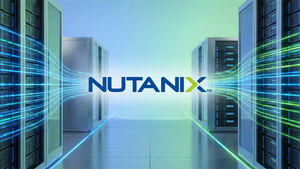
The financial markets are currently navigating a fascinating intersection of technological prowess and speculative fervor, with Nvidia (NASDAQ: NVDA) and Bitcoin (CRYPTO: BTC) at the forefront. As of late November 2025, Nvidia has once again defied expectations with a stellar earnings report, fueled by an insatiable demand for its artificial intelligence (AI) chips. This performance has sent ripples through the tech sector, providing a much-needed boost to investor confidence amidst lingering concerns of an "AI bubble."
Simultaneously, Bitcoin has experienced a significant correction after reaching historic highs earlier in the fall, showcasing its inherent volatility and an increasingly tight correlation with broader tech market sentiment.
This dynamic interplay highlights a critical phase for investors, as the market grapples with the sustained growth of AI infrastructure and the unpredictable nature of digital assets. Nvidia's continued dominance in the data center and AI segments offers a beacon of strong fundamentals, while Bitcoin's recent pullback underscores the macroeconomic pressures and risk-off sentiment that can quickly grip speculative assets. The performance of these two bellwethers is not merely isolated but deeply intertwined, influencing each other and shaping the overall trajectory of the stock market as we approach the close of 2025.
AI Dominance Drives Nvidia's Surge While Bitcoin Navigates a Rough Patch
Nvidia (NASDAQ: NVDA) delivered an exceptionally strong third-quarter fiscal year 2026 earnings report on November 19, 2025, significantly surpassing analyst expectations and igniting a robust rally in its stock. The semiconductor giant reported record revenue of $57.0 billion, a staggering 62% increase year-over-year, and diluted earnings per share (EPS) of $1.30, comfortably beating consensus estimates. This phenomenal growth was overwhelmingly driven by Nvidia's Data Center segment, which achieved a record $51.2 billion in revenue, surging 66% from the previous year. CEO Jensen Huang emphasized the unprecedented demand for AI computing, stating that "Blackwell sales are off the charts, and cloud GPUs are sold out," highlighting the accelerating and compounding need for compute across AI training and inference. The company also provided an optimistic outlook for the fourth quarter, projecting revenue of $65.0 billion, further bolstering investor confidence and momentarily alleviating fears of an "AI bubble."
In stark contrast, Bitcoin (CRYPTO: BTC) has faced a challenging period in late 2025, experiencing a significant pullback after reaching an all-time high of over $126,000 in early October. Throughout November, BTC's price dipped below $93,000 and at times touched lows near $80,000 to $81,000, representing a substantial decline of approximately 33% from its peak. As of late November, Bitcoin trades around $86,400, reflecting a fragile sentiment. This downturn was largely fueled by a pervasive "risk-off" mood across global markets, significant outflows from US-listed spot Bitcoin Exchange-Traded Funds (ETFs) totaling $3.5 billion in November, and the Federal Reserve's continued restrictive monetary policy delaying anticipated interest rate cuts. Whale repositioning and technical weakness, including a "death cross" pattern, further amplified selling pressure.
The immediate market reactions to these divergent performances underscore their intertwined nature. Nvidia's strong earnings announcement on November 19th acted as a temporary catalyst for the broader market, injecting a sense of optimism that spilled over into the cryptocurrency space. Following Nvidia's report, Bitcoin saw a modest rebound, and shares of cryptocurrency mining companies like Cipher Mining (NASDAQ: CIFR) and IREN (NASDAQ: IREN) experienced notable increases. This demonstrates how a bellwether tech company's robust performance can influence sentiment and capital flows even in seemingly disparate markets, momentarily stabilizing assets like Bitcoin that have been under macroeconomic pressure.
Winners and Losers: The Ripple Effect of AI and Crypto Dynamics
Nvidia's (NASDAQ: NVDA) continued dominance in the AI sector positions it as a significant winner, with its stock surging on the back of overwhelming demand for its Blackwell series chips and data center solutions. This success extends beyond Nvidia itself, benefiting the broader semiconductor industry. Companies involved in the AI supply chain, from specialized component manufacturers to cloud service providers that leverage Nvidia's hardware, are poised to gain. For instance, major cloud players like Amazon (NASDAQ: AMZN) with AWS, Microsoft (NASDAQ: MSFT) with Azure, and Alphabet (NASDAQ: GOOGL) with Google Cloud, which are heavily investing in AI infrastructure, are direct beneficiaries as they deploy Nvidia's cutting-edge GPUs to power their services. Other AI software and service companies that build on Nvidia's ecosystem also stand to win from the accelerating adoption of AI.
Conversely, the recent volatility and significant pullback in Bitcoin (CRYPTO: BTC) have created a challenging environment for several players. Cryptocurrency mining companies, despite a brief uplift from Nvidia's earnings, face pressure from lower Bitcoin prices impacting their profitability, particularly those with higher operational costs. Companies like Marathon Digital Holdings (NASDAQ: MARA) and Riot Platforms (NASDAQ: RIOT) are highly susceptible to Bitcoin's price fluctuations. Furthermore, institutions that have made significant investments in Bitcoin or offer crypto-related services might see reduced asset under management or trading volumes during periods of decline. The tightening correlation between Bitcoin and traditional tech stocks also means that a broader tech sector downturn, perhaps fueled by "AI bubble" concerns or macroeconomic headwinds, could drag Bitcoin down further, impacting a wider array of investors who view it as a high-beta tech play.
The interplay between Nvidia and Bitcoin also creates a complex dynamic for the broader stock market. While Nvidia's strong performance has been a significant driver for indices like the S&P 500 and NASDAQ, contributing substantially to their gains in 2025, a sudden reversal in AI sentiment could have widespread negative implications. Should the "AI bubble" concerns materialize or demand for AI chips unexpectedly wane, companies heavily invested in AI, and by extension, the entire tech sector, would face significant headwinds. Similarly, Bitcoin's increasingly close ties to the tech market mean that its volatility can act as an early warning signal for broader risk-off sentiment, potentially impacting other speculative growth stocks and creating a ripple effect across portfolios that are heavily weighted towards technology and high-growth assets.
Broader Significance: AI's Enduring Trend Amidst Market Crossroads
The current market dynamics, characterized by Nvidia's (NASDAQ: NVDA) AI-driven ascent and Bitcoin's (CRYPTO: BTC) volatile journey, fit squarely into broader industry trends that are reshaping the global economy. The insatiable demand for AI infrastructure, spearheaded by Nvidia's advanced GPUs, signifies a fundamental shift towards an AI-first era. This isn't merely a cyclical boom but a foundational technological transformation, akin to the internet revolution, with AI expected to drive unprecedented productivity gains and innovation across every sector. Nvidia's performance reflects the accelerating pace of AI adoption, from enterprise solutions to sophisticated large language models, cementing its role as a critical enabler of this revolution.
The ripple effects of this AI dominance are profound. Competitors such as Advanced Micro Devices (NASDAQ: AMD) and Intel (NASDAQ: INTC) are aggressively pursuing their own AI strategies, but Nvidia's current lead in performance and ecosystem integration makes it a formidable challenge to overcome. The success of Nvidia could spur increased R&D spending and strategic partnerships across the semiconductor industry, fostering innovation but also intensifying competition. Beyond hardware, the AI trend impacts software developers, data centers, and even energy providers, all of whom are adapting to the burgeoning demands of AI workloads. Regulatory bodies are also beginning to scrutinize the ethical implications and potential market concentration risks associated with powerful AI technologies, hinting at future policy implications that could shape the industry's landscape.
Bitcoin's trajectory, while seemingly separate, is also intertwined with these broader trends. Its increasing correlation with tech stocks suggests a maturation of the asset, moving away from a purely niche digital currency to one more influenced by macro-economic factors and investor sentiment towards speculative growth. Historically, periods of rapid technological advancement have often been accompanied by speculative asset bubbles. Comparisons can be drawn to the dot-com bubble of the late 1990s, where revolutionary technology met irrational exuberance. While Nvidia's fundamentals appear robust, the broader market's reaction to AI stocks, combined with Bitcoin's "risk-on" behavior, prompts a cautious evaluation of market stability. The question remains whether the current enthusiasm for AI is sustainable, or if it harbors elements of speculative excess that could eventually impact both the tech sector and correlated assets like Bitcoin.
What Comes Next: Navigating the Future of AI and Digital Assets
Looking ahead, the short-term trajectory for Nvidia (NASDAQ: NVDA) appears robust, driven by continued strong demand for its AI chips. The company's optimistic Q4 FY26 guidance suggests that the AI boom is far from over, and its strategic focus on developing increasingly powerful architectures like Blackwell and GB300 will likely maintain its market leadership. However, long-term possibilities involve navigating intensifying competition from rivals like Advanced Micro Devices (NASDAQ: AMD) and Intel (NASDAQ: INTC), as well as potential shifts in AI hardware innovation. Nvidia may need to further diversify its revenue streams beyond pure hardware, perhaps expanding its software platforms and AI services, to sustain its growth trajectory. Market opportunities include further penetration into enterprise AI, sovereign AI initiatives, and potentially new applications in robotics and autonomous systems. Challenges include managing supply chain complexities, potential regulatory scrutiny over market dominance, and the cyclical nature of semiconductor demand.
For Bitcoin (CRYPTO: BTC), the immediate future is likely to remain volatile, influenced by ongoing macroeconomic conditions, particularly the Federal Reserve's monetary policy and the timing of potential interest rate cuts. A shift towards a more accommodative monetary environment could provide a tailwind for Bitcoin, re-igniting institutional interest and ETF inflows. Long-term possibilities for Bitcoin include continued adoption as a digital store of value and increasing integration into traditional financial systems, especially with the maturation of spot ETFs. However, challenges include persistent regulatory uncertainty in various jurisdictions, competition from other cryptocurrencies, and the inherent price instability that deters some institutional investors. Strategic pivots for the crypto market might involve greater emphasis on real-world utility for blockchain technology beyond speculative trading, and a focus on regulatory clarity to attract more mainstream capital.
Potential scenarios range from a continued "K-shaped" recovery, where AI-focused tech giants like Nvidia thrive while other market segments struggle, to a broader market correction if "AI bubble" concerns intensify or macroeconomic headwinds worsen. In a bullish scenario, Nvidia's innovation continues to fuel AI adoption, leading to sustained market growth and potentially pulling Bitcoin higher as risk appetite improves. In a bearish scenario, a slowdown in global economic growth or unexpected regulatory actions could dampen demand for high-tech assets, leading to a more significant correction in both Nvidia's stock and Bitcoin's price. Investors should prepare for continued volatility and closely monitor key economic indicators, central bank communications, and technological advancements to adapt their strategies.
Comprehensive Wrap-up: A Market in Flux
The late 2025 financial landscape is undeniably shaped by the powerful forces of artificial intelligence and the dynamic world of digital assets, with Nvidia (NASDAQ: NVDA) and Bitcoin (CRYPTO: BTC) serving as critical barometers. Nvidia's recent earnings report unequivocally showcased the robust and accelerating demand for AI infrastructure, positioning the company as a pivotal driver of technological advancement and market growth. Its performance has not only validated the immense potential of AI but also provided a crucial boost to investor confidence across the tech sector, momentarily assuaging fears of an overinflated "AI bubble." This underscores a key takeaway: the AI revolution is deeply entrenched and continues to fuel significant corporate earnings.
However, the concurrent volatility in Bitcoin, marked by a substantial correction in November, highlights the enduring sensitivity of speculative assets to broader macroeconomic conditions and shifting risk sentiment. Bitcoin's increasingly tight correlation with tech stocks suggests its evolution into a "risk-on" asset, making it susceptible to the same market jitters that affect high-growth technology companies. This reinforces the understanding that while digital assets offer unique opportunities, they are not immune to traditional market forces and can act as an early indicator of broader market caution.
Moving forward, investors should anticipate a market characterized by continued innovation in AI, likely led by Nvidia, but also by persistent macroeconomic uncertainty that will influence both traditional equities and cryptocurrencies. The interplay between these forces will be critical. A sustained AI boom could continue to buoy tech stocks and, by extension, provide some support for Bitcoin. Conversely, any significant slowdown in AI spending or a more severe "risk-off" market environment could trigger broader corrections. Investors should watch for further developments in AI technology, regulatory clarity around cryptocurrencies, and the Federal Reserve's stance on interest rates in the coming months, as these will be key determinants of market direction and stability.
This content is intended for informational purposes only and is not financial advice






